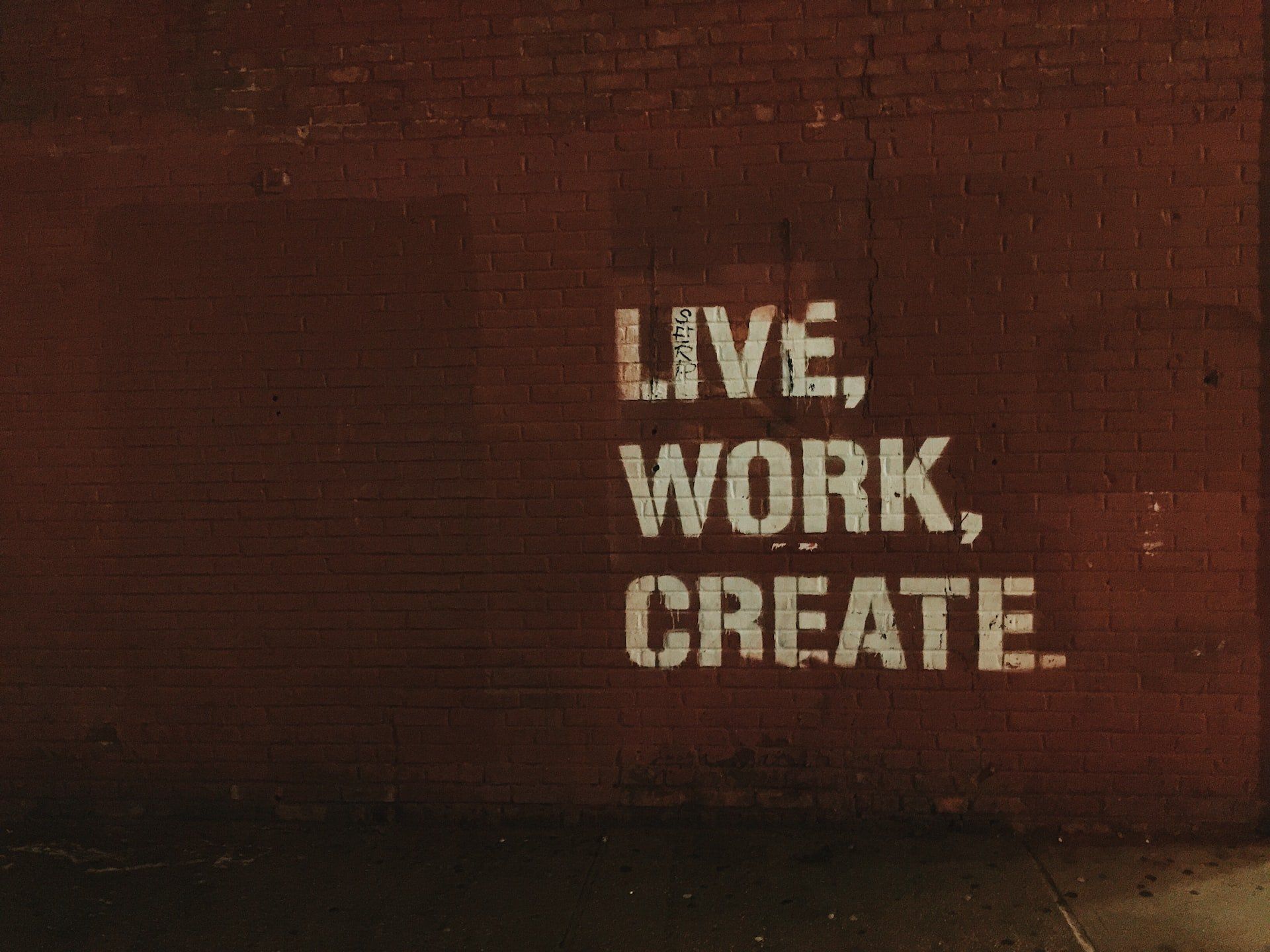The Corporate Darwinism Playbook: Change and Transformation in the Age of Disruption
Change vs Transformation: What’s the Difference?

Market disruptions aren't coming—they’re here. Like tectonic plates grinding beneath complacent industries, they’re rendering legacy models as relevant as fax machines at an AI hackathon. This isn’t about weathering storms; it’s about evolving gills into lungs. Embrace change! Let’s dissect the DNA of survival.
Change vs Transformation: What’s the Difference?
- Change refers to the planning and execution of specific actions aimed at improving existing processes or structures within an organization, making them better, faster, or cheaper. Change is a finite initiative to make a clear, measurable shift in a specific business function. Change initiatives are clear and well-defined, focusing on changing policies, procedures, and processes to achieve a particular goal. Change is generally a planned response to external factors, addressing specific needs or challenges.
- Transformation involves a fundamental shift in an organization’s business model, replacing the old with new, and is often unpredictable and riskier.
- Change is a response to external factors, while transformation seeks to break with the past and discover a new business model with an eye toward the future. Transformation requires a broader set of capabilities, including dynamic coordination of resources, stronger collaboration, and continual communication.
The Change Trap: Playing-Not-to-Lose
Change is corporate yoga: incremental stretches to avoid snapping. It’s the equivalent of adding lane assist to a horse carriage. It sure could help, but is it the right application of technology? Understanding the current situation within organizations is essential for planning and executing effective change initiatives.
| Change Characteristics | Why It Fails |
|---|---|
| Fixes existing processes (e.g., Work From Home(WFH) policies) | Treats symptoms, not root causes |
| Linear execution (e.g., new boss, new technology, new ways of working) | Creates friction without vision |
| Maintains legacy metrics | Rewards rearview-mirror thinking |
Most organizations operate in perpetual “change mode”—like Blockbuster adding late-fee forgiveness while Netflix streamed their funeral. Change keeps the lights on but blinds you to the sunrise. It’s like watching an oncoming train. You can see it coming, but without jumping the track, there is little that you can do to stop it.
Embrace change. The good kind. Digital transformation initiatives are essential for organizations to survive and thrive in a rapidly changing business environment. But digital transformation alone is not enough. Develop the transformation superpowers and play-to-win!
Transformation: Evolution or Extinction. Playing-to-Win.
Transformation isn’t a project—it’s a evolution. True transformation requires a modification of core beliefs and long-term behaviors, suggesting that this process is essential for achieving sustained results. It asks: “What if our core business became obsolete tomorrow?” Digital transformation involves reinventing how a company operates, moving beyond mere incremental changes to a fundamental shift in a business model.
The 4 Transformation Markers
1. Belief Surgery
- Before: "We sell cars"
- After: "We monetize the mobility ecosystems" (Tesla’s energy storage + autonomy pivot + robotaxi and robovans, if the latest ever come out)
2. Portfolio Collision
- Amazon’s AWS wasn’t born from retail—it emerged when internal infrastructure became external gold. Slack's messaging platform wasn't born as a gaming offering but out of a desire to improve internal communication and drive better alignment and productivity.
3. Risk Calculus
- Transformation ROI follows power-law distribution: 90% of initiatives fail, but the 10% redefine industries. As many VCs will attest, the breakaway success stems from finding the center of the Venn diagram where "Good idea" and "Seems like a bad idea, hence no one else is pursuing" overlap.
4. Cultural Osmosis
- Microsoft’s 2014 "Growth Mindset" overhaul turned a bureaucratic giant into a $2T AI contender. Frequent communication with senior leadership is essential for successful transformation. This is very much the state of stasis that Apple finds itself in after the exits of the creative geniuses Steve Jobs and Jony Ive. Tim Cook has done an amazing job of creating one of the most valuable companies in the world with his steady hand and approach to leadership. But what Apple needs now is another Jony Ive or Steve Jobs to shake up the creative culture behind this revered company.
| Low Risk | High Risk |
|---|---|
| Incremental Change | Disruptive Bets |
| (ERP upgrades, Business Process Outsourcing) | (AI-first rebuild, Business Process Reimagine using AI and automation) |
Pro Tip: Organizations clinging to the top-left quadrant are already fossils.
Low Risk / Incremental Change
Examples: ERP upgrades, CRM optimizations, lean process tweaks
Characteristics:
- Predictable ROI (5-15% efficiency gains)
- Short-term wins (3-12 month horizon)
- Low organizational friction
- Outcome: Survival with dignity
- Real-World Case: Walmart’s inventory management AI rollout (saved $6B in logistics costs without altering core retail model)
- Strategic Insight: “Do this to avoid becoming urgently irrelevant.”
High Risk / Disruptive Bets
Examples: AI-first business model rebuild, vertical integration (e.g., Tesla battery plants), category creation
Characteristics:
- Binary outcomes (90% fail, 10% create new markets)
- 3-5 year payoff horizon
- Requires cultural/political capital burn
- Outcome: Category kingship or collapse
- Real-World Case: Adobe’s 2013 pivot from boxed software to SaaS (stock soared 1,200% in 10 years)
- Strategic Insight: “Do this to make competitors’ SEC filings cite you as existential risk.”
When to Use Each (and Why It Matters)
| Metric | Low Risk/Incremental | High Risk/Disruptive |
|---|---|---|
| ROI Profile | Linear (1:1.5 ROI) | Exponential (1:100 or 0:1) |
| Failure Cost | Departmental embarrassment | Career extinction events |
| Leadership Required | Competent managers | Visionary pirates |
| Best For | Protecting cash cows | Escaping commoditization traps |
The Brutal Truth Most Consultants Won’t Tell You
- Low-risk initiatives now have half the shelf-life they did in 2015 (thanks to AI-driven market speed).
- High-risk bets fail at 90% rates not because they’re bad ideas but because most organizations execute them like incremental changes.
- The sweet spot? High-risk execution with low-risk optics (e.g., Amazon’s quiet $10B AWS buildout disguised as “internal infrastructure project”).
Final Rule: If your transformation portfolio doesn’t make your CFO hyperventilate, you’re just doing expensive maintenance.
Transition: The Corporate Metamorphosis
Transition is the cocoon phase—messy, vulnerable, and non-negotiable.
3 Transition Traps
- The Hybrid Horrorshow: Half-measures (e.g., "digital transformation" = PDFs instead of paper)
- Nostalgia Poisoning: Kodak’s 1998 "Photo CD" flop: digitizing film rather than obliterating it
- Metric Myopia: Measuring transition success by old KPIs is like grading SpaceX by horse carriage sales
Strategy × Innovation × Execution = Transformation
This equation separates Amazons from RadioShacks:
1. Strategy as War Games
- Disney’s 2019 DTC pivot: Burn $1B+ to bypass Netflix, betting on Marvel/Star Wars IP moats. Doubling down on parks and experiences.
2. Innovation Through Friction
- Apple Pay succeeded because Tim Cook stared down Wall Street’s 2% transaction fee addiction.
3. Execution as Bloodsport
- NVIDIA’s 10-year GPU bet: From gaming to the $2T AI infrastructure backbone
The Force Multiplier Effect
| Element | Poor Execution | World-Class Execution |
|---|---|---|
| Strategy | PowerPoint fantasy | Market redefinition |
| Innovation | Lab curiosities | Patent tsunamis |
The CX/EX Ultimatum
Customers and employees aren’t segments—they’re your genome editors.
Partnership Hierarchy
1. Wallet (Transactional)
- Walmart’s rollback prices
2. Head (Rational)
- Costco’s membership model
3. Heart (Emotional)
- Harley-Davidson’s HOG communities
Companies stuck at Level 1 are commodity vendors. Those mastering Level 3 print cultural currency.
Call to Mutation
The math is brutal:
- Change = 1-3% annual efficiency gains
- Transformation = 10x market cap shifts
Future-proof organizations operate like venture portfolios—killing 90% of initiatives to birth epoch-defining 10%ers. The question isn’t if you’ll transform but when the market will force your hand.
Self-Audit
- Do your OKRs still include "maximizing shareholder value"? (Welcome to 1985)
- Are CX surveys measuring satisfaction instead of obsession?
- Does your C-suite have a Chief Ecosystem Officer?
Transform or join the corporate fossil record. The meteor’s already hit.
Why Transform?
Transformation isn’t just a buzzword—it’s the lifeline for organizations navigating an era of relentless disruption. While both change and transformation can significantly impact an organization, their effects differ in scale and ambition. Change often brings incremental improvements, refining processes or tweaking operations to enhance efficiency and well-being. Transformation, on the other hand, is a complete overhaul—a reimagining of the organization’s identity, purpose, and value proposition. It’s about creating something fundamentally better, more relevant, and more useful.
However, transformation comes with higher stakes. It demands a delicate alignment of people, processes, and technology to succeed. It’s not just about executing a plan; it’s about embracing risk, experimenting boldly, and fostering a culture that thrives in uncertainty.
So, why take the leap? Because the rewards far outweigh the risks. Today’s customers are no longer passive consumers—they are active participants seeking meaningful experiences and relationships with brands. They demand partnerships that address their head (logic), heart (emotion), and wallet (value). Transformation allows organizations to meet these expectations by reinventing business models to deliver mutual value exchange.
Companies that prioritize customer experience in their transformation efforts aren’t just surviving—they’re thriving. These organizations are “Playing-to-Win,” achieving:
- Higher market penetration by standing out in crowded industries
- Increased revenue and margins through innovative offerings
- Enhanced customer satisfaction by delivering memorable experiences
- Improved employee satisfaction by fostering purpose-driven cultures
Transformation isn’t optional—it’s essential for companies that want to move beyond transactional relationships and create ecosystems of loyalty, trust, and growth.
In short, transformation is how you stop playing defense and start dominating the game.
When to Change or Transform: The Corporate Crossroads
Change is a Band-Aid. Transformation is an organ transplant. While minor changes can address specific issues, transformation requires a more comprehensive approach. Knowing which scalpel to wield separates leaders from caretakers.
The Trigger Matrix
| Change | Transformation |
|---|---|
| Fixing leaks in the boat | Building a submarine |
| Quarterly efficiency gains | Market category creation |
| “How do we do this better?” | “Why do we exist?” |
The Rule of 10x
- Change when facing 10% problems (e.g., reducing customer service wait times)
- Transform when confronting 10x threats (e.g., AI rendering your core product obsolete)
Still debating? Ask: “Will this initiative make us the category king or just slightly less irrelevant?”
Implementing Change vs. Transformation: Blueprints for Warfare
Change Playbook (Corporate Yoga)
- Diagnose the itch: Identify one broken process (e.g., clunky CRM)
- Prescribe steroids: Automate, train, measure
- Celebrate incrementalism: High-five for 15% efficiency gains
Transformation Playbook (Corporate Mutiny)
- Declare war on legacy: Burn the org chart (Adobe’s 2013 pivot from boxed software to SaaS)
- Build a pirate fleet: Assemble cross-functional SWAT teams with P&L amnesia.
- Reward heresy: Promote the manager who cannibalizes their own division for the sake of the betterment of the overall organization.
Pro tip: Transformation without a burning platform is just expensive improv.
Overcoming Resistance: Slaying the Corporate Hydra
Resistance to change is human. Resistance to transformation is organizational meth addiction.
The 3-Headed Monster
1. Nostalgia Junkies: "But we’ve always sold fax machine toner!"
- Antidote: Force them to use competitors’ AI-driven products
2. Metric Zombies: "Our KPIs look great!" (as the industry collapses)
- Antidote: Replace EBITDA with "customer obsession index."
3. Innovation Tourists: "Let’s do blockchain…for our cafeteria payments!"
- Antidote: Tie 50% of bonuses to moonshot bets.
Survival Hack: Hire a Chief Paradox Officer to simultaneously defend the core and attack the future.
Sustaining Momentum: From Corporate Crash Diet to Lifestyle
Most "transformations" fail because leaders confuse it with a weekend detox. Real transformation is a metabolic overhaul.
The Maintenance Matrix
| Change | Transformation |
|---|---|
| Annual process reviews | Real-time mutation radar |
| Employee training modules | Forced job rotations every 18 months |
| Customer Satisfaction Surveys (CSS) | Addictive experience design (see: Apple’s cult mechanics) |
Cold Truth: If your "transformed" org still has the same org structure 24 months later, you’ve just done an expensive change.
The Final Litmus Test
- Change = You could teach it at a TEDx talk.
- Transformation = You’d get arrested for it at a shareholder meeting focused on short-term, quarter-to-quarter results vs. long-term, sustained outcomes.
How many companies do you know that are making bold bets on the future, and the founder is still not actively involved? Yeah, I struggled to find any. So, choose wisely!
Conclusion: Navigating Transformation Change
Change and transformation are two concepts often used interchangeably, but there are apparent differences between them. Understanding the differences between transformation and change can help you navigate shifts in your company. Being aware of the differences between transformation and change can prepare you to navigate both.
Mastering change may enable companies to keep up with fast-shifting consumer expectations, but deliberate, planned transformation often redefines what success looks like and how to achieve it.
“Strategic transformation allows a company to move at the speed of opportunity itself!”
Future Ventures resources are uniquely qualified to support your organizational journey for Change, Transition, or Transformation! Contact us for a FREE consultation.










